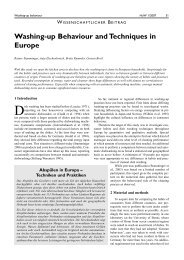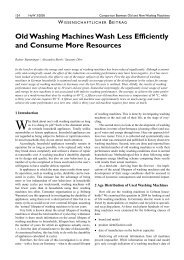Development of a novel mechatronic system for mechanical weed ...
Development of a novel mechatronic system for mechanical weed ...
Development of a novel mechatronic system for mechanical weed ...
You also want an ePaper? Increase the reach of your titles
YUMPU automatically turns print PDFs into web optimized ePapers that Google loves.
Introduction<br />
Inter-row <strong>weed</strong>ing <strong>system</strong>s, their operating speeds and limitations were<br />
reviewed by Marfield and Bond (Marfield 2002; Bond et al. 2003). Weeding<br />
quality is highly dependant on equipment adjustment and on the row steering<br />
accuracy. Steering can be done manually, where experience and skills are<br />
expected from operator, or with sophisticated equipment e.g. computer vision<br />
guidance <strong>system</strong> or DGPS.<br />
Typical <strong>system</strong>s <strong>for</strong> inter-row <strong>weed</strong> control are toolbars pulled or pushed by a<br />
tractor. A tractor can simply be driven along the crop row carrying a toolbar with<br />
the <strong>weed</strong>ing implement mounted at a constant horizontal spacing. The <strong>weed</strong>ing<br />
tool as a part <strong>of</strong> the <strong>system</strong> can usually be adjusted to different inter-row<br />
distances and plant sizes. To achieve optimum <strong>weed</strong> reduction, the goal is to<br />
work as close to the plant as possible to minimise the non-hoed intra-row area.<br />
For most inter-row <strong>system</strong>s, the operator is just as important as the machinery.<br />
Without precise steering and appropriate adjustment, the equipment will<br />
damage the plant row and result in a crop loss.<br />
Generally, inter-row <strong>weed</strong>ing <strong>system</strong> can be divided into non-powered and<br />
powered <strong>system</strong>s. The simplest non-powered <strong>system</strong>s are duckfoot-hoes with<br />
hoeing blades either rigidly mounted to the crossbar or mounted on a spring,<br />
<strong>for</strong>ming a so called vibrating hoe. With an optimal hoeing depth <strong>of</strong> 1-2 cm,<br />
multiple hoeing tools can be placed side by side to accommodate larger row<br />
widths. Vibrating hoes usually cultivate the soil surface more deeply, uprooting<br />
a larger portion <strong>of</strong> the <strong>weed</strong>s. On that way they disturb the soil more and bring<br />
<strong>weed</strong> seeds to the surface, increasing the number <strong>of</strong> seeds which could<br />
germinate. The rigidly mounted type effectively cuts the <strong>weed</strong>s with less<br />
disturbance <strong>of</strong> the soil. Both types can be mounted on a parallelogram carriers<br />
providing accommodation <strong>of</strong> the hoeing blades to different soil contours.<br />
When a hoe is not sufficient in <strong>weed</strong> removal, powered equipment is an <strong>of</strong>ten-<br />
used option. A brush <strong>weed</strong>er consists <strong>of</strong> stiff bristles mounted to a rotating disk,<br />
which rotates with a high speed to uproot shallow <strong>weed</strong>s. The main advantage<br />
is very minimum disturbance <strong>of</strong> the soil since the brushes do not penetrate the<br />
ground. However, it is hard to adjust the brush width and the tractor’s speed<br />
needs to be kept below 4 km/h. Also, they are ineffective in hard soil and can<br />
16





